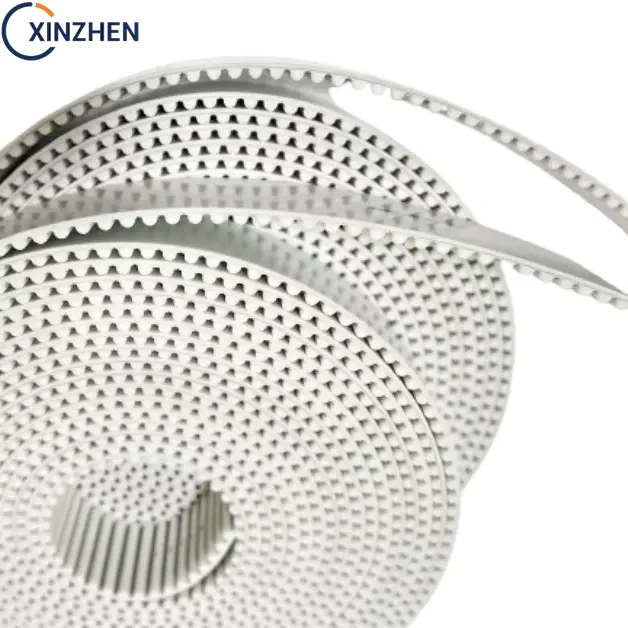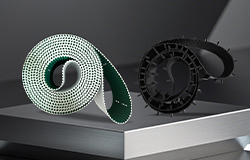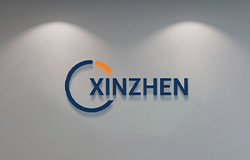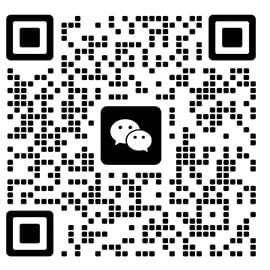Client Overview and Precision Challenge
A prominent Swedish manufacturer of high-speed pharmaceutical packaging equipment faced a critical design constraint in their latest blister packaging machine, requiring a timing belt solution that could not be joined conventionally due to space limitations and sanitary design requirements. Their next-generation machine needed to encapsulate a complex drive path around multiple pulleys in an extremely compact housing where traditional continuous belts couldn't be installed without disassembling the entire drive system. The application demanded a pharmaceutical-grade open-ended timing belt that could be quickly installed and tensioned without specialized tools while maintaining the precise synchronization necessary for accurate pill counting and blister sealing operations. The client required a solution that would achieve positional accuracy within ±0.2mm at operating speeds of 120 cycles per minute while resisting daily chemical cleaning with aggressive disinfectants and maintaining flexibility in a controlled 15°C environment.
The engineering team had experimented with various connection methods, including glued joints, mechanical fasteners, and welded ends, but all previous solutions failed within weeks of operation. The failure modes included joint separation under high torque loads, material fatigue at connection points, and contamination traps that violated pharmaceutical hygiene standards. The client needed an open-ended timing belt system that could match the performance of continuous belts while allowing for quick installation and maintenance access. Additional requirements included USDA and FDA compliance for direct product contact surfaces, ability to withstand steam cleaning at 85°C, and operational noise below 70 dB to meet workplace safety standards. Their production timeline allowed only eight weeks for development and testing before the machine platform needed to enter mass manufacturing.
Advanced Engineering and Connection System Innovation
Our technical team developed a revolutionary open-ended connection system that addressed all the client's requirements through material science innovation and mechanical engineering excellence. We created a specialized polyurethane compound with enhanced hydrolysis resistance to withstand daily steam cleaning, incorporating pharmaceutical-grade additives that met standards for repeated food contact. The belt reinforcement utilized continuous stainless steel cables that extended precisely to the belt ends, where they engaged with our patented interlocking system. This connection mechanism employed laser-cut titanium plates that captured the reinforcement cables in a double-shear configuration, distributing the load evenly across all reinforcement elements without creating stress concentration points.

The connection system's innovation lay in its installation simplicity and reliability. The design required only hand pressure to engage the initial connection followed by a quarter-turn mechanical locking mechanism that needed no special tools. The locking mechanism incorporated a visual indicator that showed proper engagement and tension status, preventing operational errors during maintenance. We developed a unique tooth profiling method that ensured perfect phasing across the connection point, maintaining continuous tooth engagement across pulleys without the typical "jump" or positional error common in joined belts. Finite element analysis confirmed the connection achieved 98% of the continuous belt's tensile strength while maintaining flexibility through the pulley system. Accelerated life testing simulated three years of operation with daily connection and disconnection cycles, demonstrating no measurable wear or performance degradation in the connection system.
Precision Manufacturing and Quality Validation
The manufacturing process required exceptional precision to ensure perfect alignment of the reinforcement cables and connection points. We implemented advanced laser cutting systems to create the connection components with micron-level accuracy, followed by electrochemical polishing to eliminate all microscopic surfaces that could harbor contaminants. The polyurethane molding process utilized custom-designed molds with temperature-controlled zones that ensured perfect curing of the specialized compound around the stainless steel reinforcement. Each belt end underwent precise machining to ensure perfect squareness and dimensional accuracy at the connection interface.
Our quality assurance protocol included 100% testing of every connection system's engagement force and locking mechanism operation. We developed specialized test equipment that simulated the actual installation process while measuring connection strength and alignment accuracy. Every production batch underwent tensile testing to destruction, with results consistently exceeding the required 2500 N/cm strength requirement. The pharmaceutical-grade validation included material certification, extractables testing, and bacterial adhesion testing per ISO 22196 standards. Our documentation package provided full traceability of all raw materials and manufacturing parameters, along with installation certification for each individual belt. The manufacturing flexibility allowed us to produce initial prototypes in two-week cycles for customer testing while maintaining the capability for mass production volumes.
Performance Results and Operational Impact
The implemented solution transformed the client's machine design and maintenance capabilities. The open-ended timing belt system reduced maintenance time from 45 minutes to under 90 seconds for belt replacement or tension adjustment, eliminating the need for technical staff to perform the operation. The positional accuracy achieved ±0.15mm consistency, exceeding requirements and improving the blister packaging quality with reduced material waste. The connection system demonstrated complete reliability through 12 months of continuous operation with daily cleaning cycles, showing no signs of wear or performance degradation.
The client reported a 40% reduction in maintenance costs associated with drive system maintenance and achieved a 30% improvement in machine up-time due to faster service interventions. The sanitary design eliminated contamination risks that had previously required complete drive system disassembly for deep cleaning. The success of this solution led to its adoption across the client's entire equipment platform, with subsequent orders totaling over 8,000 units of various lengths and profiles. The machine's competitive advantage in the market was significantly enhanced by the reduced maintenance requirements and superior reliability, resulting in an estimated €3.5 million in additional sales for the client within the first year of implementation.
Global Logistics and Continuous Partnership
Our export infrastructure ensured seamless delivery to the client's manufacturing facilities in Sweden, the United States, and Singapore. We implemented a just-in-time inventory system that maintained strategic stock levels of common configurations while providing made-to-order solutions within 10-day lead times. The packaging system was specifically designed for pharmaceutical environments, using double-bagged sterile packaging with unique identification codes that tracked each belt through the supply chain.
The partnership has evolved into ongoing collaborative development, with our engineering team working directly with the client's new product development group on future machine platforms. We established a performance monitoring system that tracks field reliability data across all installed units, providing continuous improvement feedback to our manufacturing processes. Our flexible approach to minimum order quantities enabled the client to maintain lean inventory levels while ensuring production continuity for their global customer base. This case study demonstrates our capability to deliver innovative timing belt solutions that address complex engineering challenges while meeting the stringent requirements of global export markets.

 CN
CN







 Home
Home XZ
XZ  Aug 28,2025
Aug 28,2025 
 Customized Polyurethane Timing Belt Solutions - Cooperation with German Automotive
Customized Polyurethane Timing Belt Solutions - Cooperation with German Automotive 







